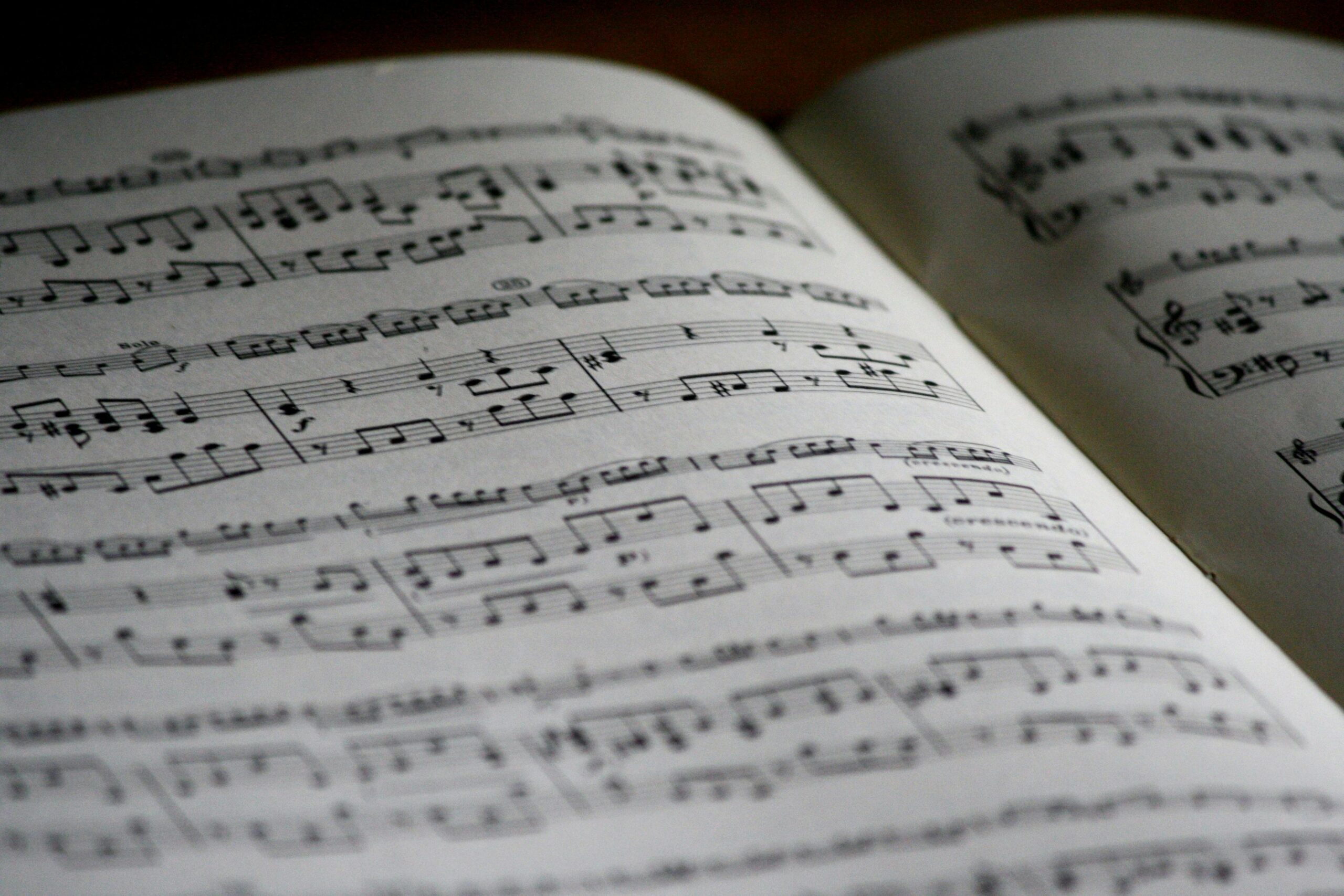Here is your guide on how to read sheet music. Firstly, why should you learn how to read sheet music? Many would argue that it is an essential skill for any musicians. Therefore, whether you’re a beginner or an experienced musician looking to enhance your skills, learning how to read sheet music opens up a world of possibilities for playing and composing music.
Table of Contents For How To Read Sheet Music
- Introduction to Sheet Music
- Understanding Musical Notation
- The Staff and Clefs
- Notes and Rests
- Key Signatures and Scales
- Time Signatures and Rhythm
- Reading Sheet Music for Different Instruments
- Tips for Effective Sheet Music Reading
- Practice Strategies
- Conclusion
1. Introduction to Sheet Music
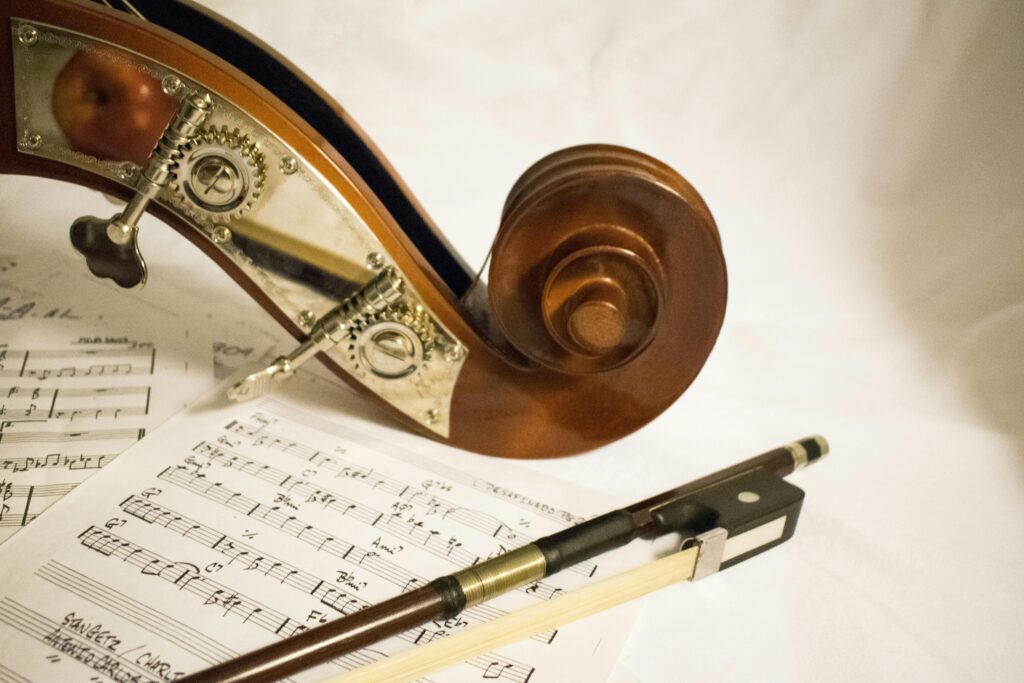

Sheet music serves as a universal language for musicians. It also allows them to communicate and interpret musical compositions across cultures and languages. Through a standardized system of symbols and markings, sheet music conveys intricate details of a piece. It includes pitch, rhythm, tempo, dynamics, articulation, and more. This precise notation enables musicians to reproduce the composer’s intentions faithfully. Additionally, it ensures a consistent interpretation of the music regardless of the performer’s background or native tongue. Moreover, sheet music facilitates the sharing of musical ideas and compositions across generations. Similarly, it preserves the richness of musical heritage for future musicians to explore and enjoy.
Beyond its role in performance, sheet music also plays a vital role in music education and training. Learning to read and interpret sheet music is an essential skill for aspiring musicians, providing them with a structured framework to understand and analyze musical compositions. By studying sheet music, students gain insight into music theory, composition techniques, and historical context. As a result, it deepens their understanding and appreciation of music as an art form. Additionally, sheet music serves as a valuable resource for music teachers. Moreover, it enables them to guide their students through the complexities of music theory and performance with clarity and precision.
Furthermore, sheet music serves as a tangible artifact of musical creativity and expression. As composers commit their musical ideas to paper, they create a lasting record of their artistic vision. Sheet music preserves the nuances of a composition, capturing the composer’s unique style, emotions, and musical innovations for future generations to explore.
2. Understanding Musical Notation
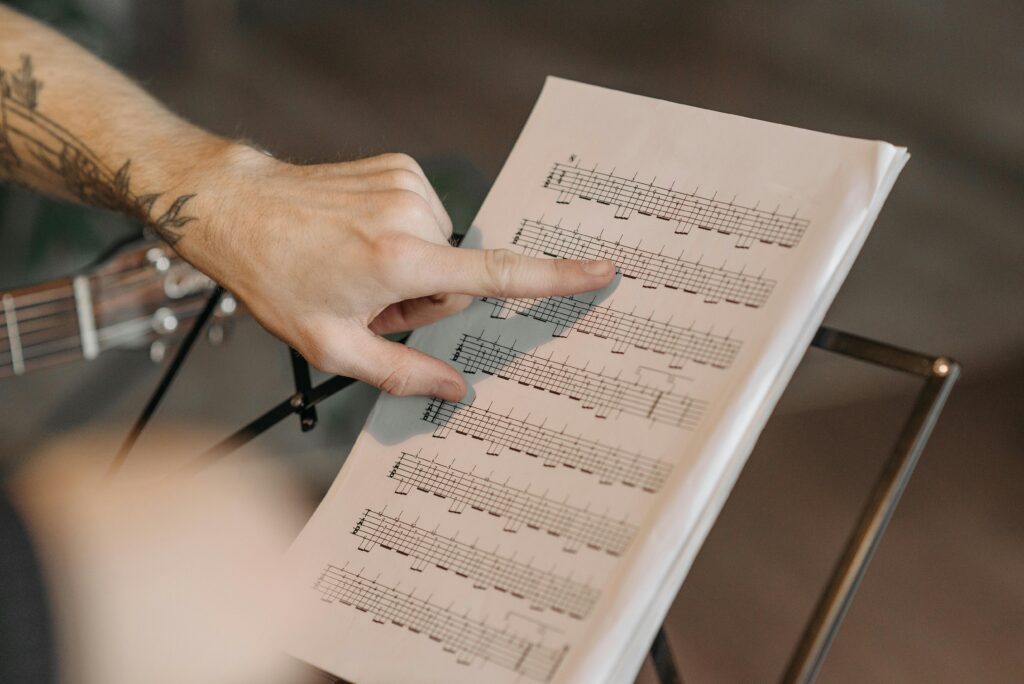

Musical notation stands as the universal language of music, a complex system meticulously designed to capture the essence of sound and rhythm. At its core, it is a symphony of symbols and markings, each meticulously crafted to convey the nuances of pitch, duration, and rhythm that bring compositions to life.
At the heart of this system lie the notes, delicate symbols arranged on the staff like stars in a constellation, each representing a distinct pitch. From the soaring highs of a treble clef to the resonant depths of a bass clef, clefs serve as guideposts at the beginning of the staff, signaling the pitch range and ensuring harmony among musicians.
Yet, in the silence between notes, rests find their place, like punctuation marks in a musical manuscript. They denote moments of pause, of anticipation, allowing the music to breathe and the listener to savor the space between sounds.
Key signatures, with their intricate patterns of sharps and flats, unveil the tonal landscape of a composition, guiding performers through the maze of musical keys and unlocking the emotional depths within.
Time signatures stand as the heartbeat of a piece, their rhythmic pulse guiding performers through the ebb and flow of musical time. Whether a stately 4/4 march or a lilting 6/8 waltz, these symbols serve as signposts along the musical journey, ensuring unity and coherence in performance.
In this intricate tapestry of symbols and markings, musical notation transcends mere communication, becoming a vessel for expression, interpretation, and collaboration. Across genres and generations, it remains a timeless testament to the power of human creativity and the beauty of the universal language of music.
3. The Staff and Clefs
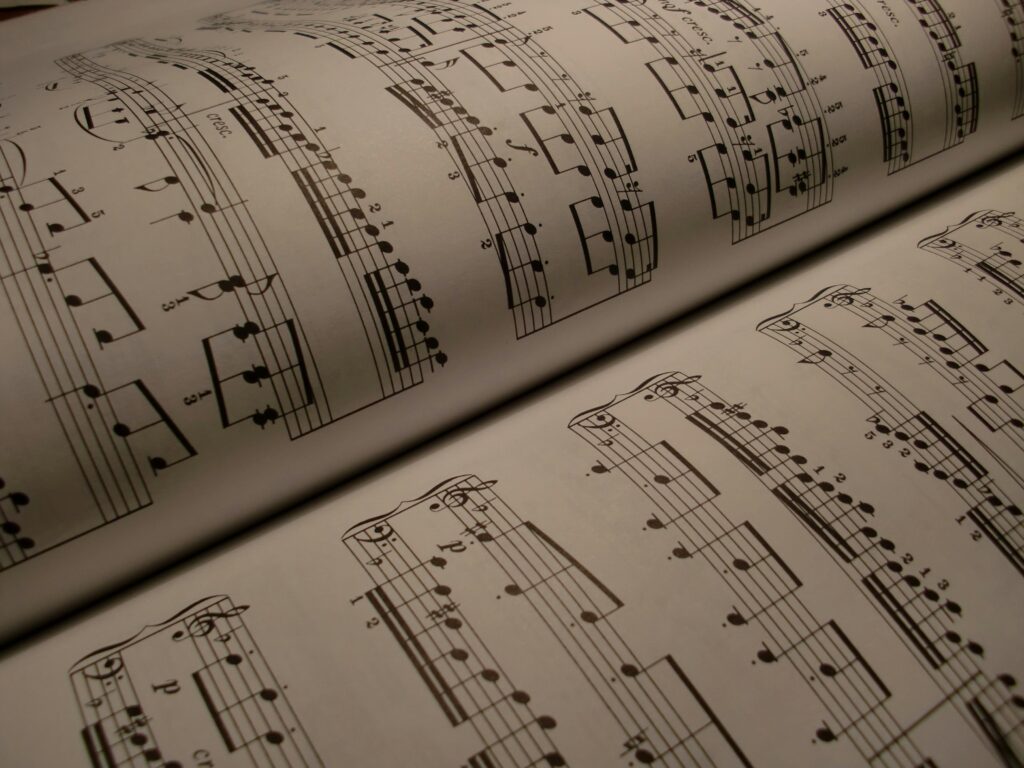

The staff serves as the foundational framework upon which musical notation is built, providing a visual representation of pitch and rhythm. Comprised of five horizontal lines and four spaces, the staff creates a grid-like structure where musical symbols and notes can be precisely positioned. Each line and space on the staff corresponds to a specific pitch, allowing musicians to accurately interpret the intended melody or harmony. Without the staff, the organization and interpretation of music would be significantly more challenging, as it provides a standardized system for musicians to communicate musical ideas.
Clefs play a crucial role in defining the pitch range of the notes placed on the staff. Positioned at the beginning of the staff, clefs indicate which lines and spaces correspond to specific pitches. The treble clef, also known as the G clef, is commonly used for higher-pitched instruments and voices, while the bass clef, or F clef, is typically utilized for lower-pitched instruments such as the bass guitar or double bass. By establishing a reference point for pitch, clefs streamline the process of reading and interpreting music, ensuring that musicians can accurately perform compositions across a wide range of instruments and vocal ranges.
Through the combination of the staff and clefs, musicians are equipped with a powerful visual tool for notating and reading music. Whether they are composing, performing, or analyzing musical pieces, the staff provides a universal language that transcends cultural and linguistic barriers.
4. Notes and Rests
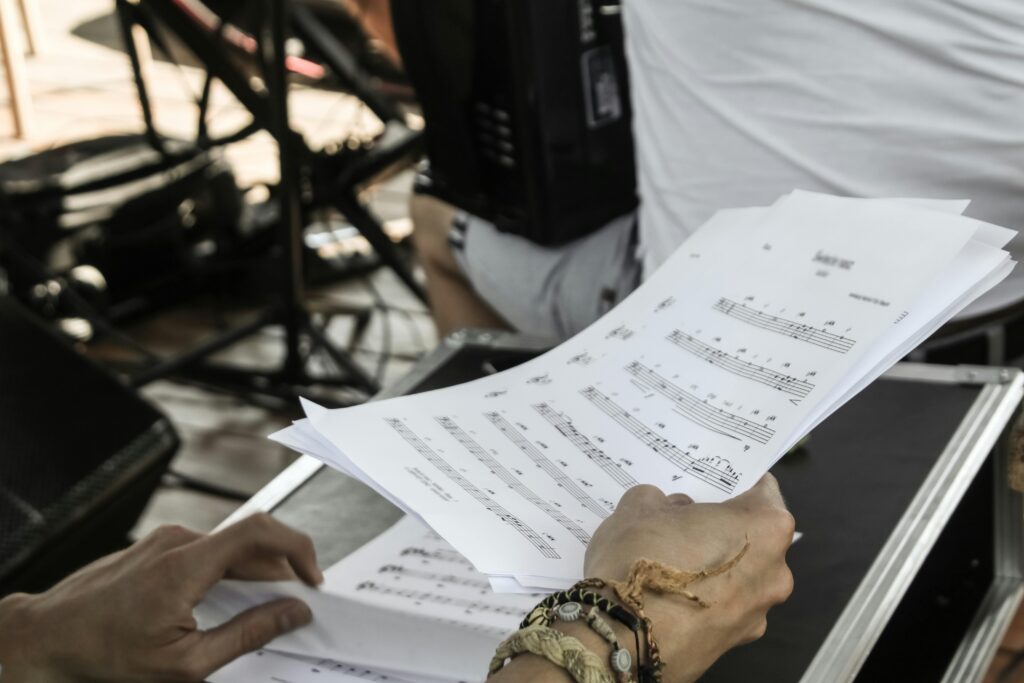

In the realm of music notation, notes serve as fundamental symbols that convey both pitch and duration. Positioned on the staff, each note corresponds to a distinct pitch on the musical scale, allowing composers and musicians to precisely communicate the intended sounds. The duration of a note is equally crucial, dictating the length of time it should be held or sounded. This dual role of notes facilitates the accurate transcription and performance of musical compositions, ensuring fidelity to the composer’s vision.
Notes are diverse and can be categorized into various types based on their duration. Among the most common are whole notes. These represent the longest duration, followed by half notes, quarter notes, eighth notes, and so forth. Each type of note possesses a specific rhythmic value, contributing to the rhythmic complexity and structure of the music. Understanding these distinctions is essential for both composers and performers. Why? Because it enables them to interpret and execute musical passages with precision and nuance.
In addition to notes, rests play an equally crucial role in music notation by indicating periods of silence within the musical composition. Like notes, rests come in various durations, including whole rests, half rests, quarter rests, and beyond. These symbols serve as essential markers for performers, guiding them through the rhythmic structure of the piece. They also ensure that moments of silence are observed with accuracy. Together, notes and rests form the foundation of musical notation, providing composers and musicians with a universal language to communicate and express their artistic ideas.
5. Key Signatures and Scales


Key signatures serve as crucial signposts for musicians, situated at the inception of a musical staff to elucidate the piece’s key. By providing a visual cue of which notes are to be sharpened or flattened throughout the composition, they streamline the reading and interpretation process for performers. These symbols essentially serve as a roadmap, guiding musicians through the tonal landscape of a piece and shaping their understanding of its harmonic structure. Without a clear grasp of key signatures, navigating through sheet music becomes significantly more challenging. Also, it can lead to inaccuracies in performance.
Integral to comprehending key signatures is a solid understanding of scales, the fundamental building blocks of music. Scales, whether major, minor, or modal, are sequences of notes arranged in a specific order, either ascending or descending. Mastery of scales aids in deciphering key signatures. It also enhances a musician’s ability to improvise, compose, and comprehend the underlying harmonic framework of a piece. By internalizing the patterns and intervals within scales, performers gain a deeper insight into the tonal relationships within music. So much so, they can sharpen their interpretive skills and musical fluency.
Moreover, the correlation between scales and key signatures underscores the symbiotic relationship between theory and practice in music. Through the study of scales, musicians develop a nuanced understanding of tonality and modulation, enabling them to navigate seamlessly through different keys and modulations within a composition. This symbiosis between scales and key signatures underscores the interconnectedness of various musical elements. It also highlights the importance of a comprehensive musical education.
6. Time Signatures and Rhythm
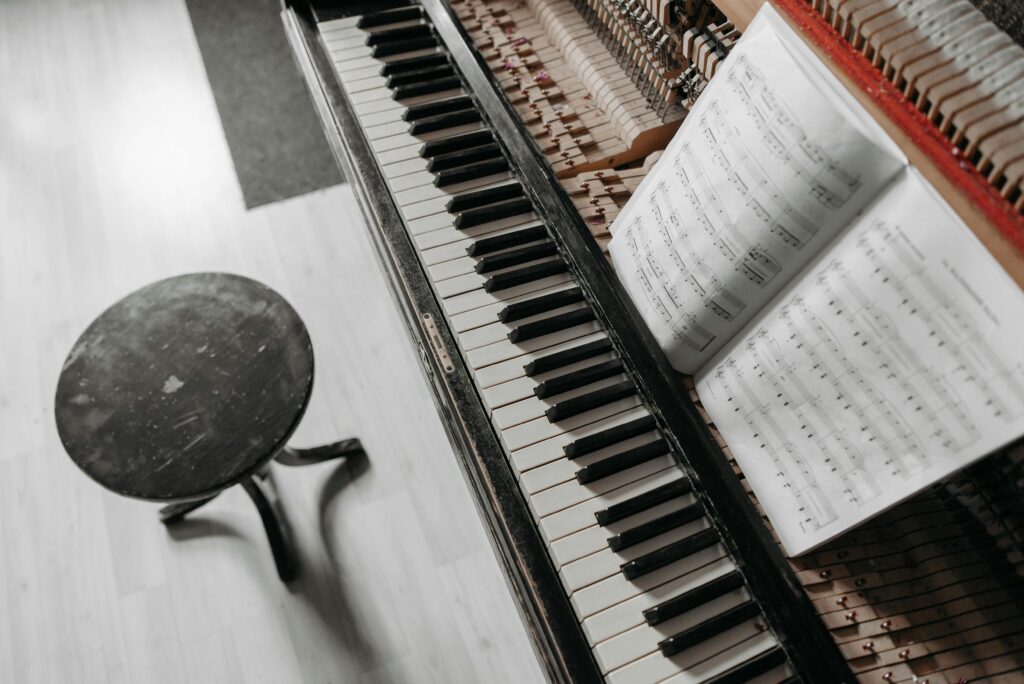

Time signatures serve as vital signposts for musicians navigating through the intricate landscape of musical compositions. Placed prominently at the commencement of a staff, they carry the weight of conveying essential information about the underlying meter and rhythm of the music. Comprising two distinct numbers, they form a concise yet profound code: the top number denotes the quantity of beats contained within each measure, while the bottom number designates the specific note value receiving one beat. This symbology serves as a foundational pillar upon which the entire rhythmic structure of a piece is constructed.
Delving deeper into the significance of time signatures reveals their indispensable role in facilitating musical interpretation and performance. By providing a clear framework for rhythmic organization, they empower musicians to synchronize their actions with precision and coherence. Through the discernment of time signatures, performers grasp the inherent pulse and flow of a composition, enabling them to navigate its twists and turns with confidence and proficiency.
Moreover, the comprehension of time signatures transcends mere technical proficiency, extending into the realm of musical interpretation and communication. Beyond the mechanical adherence to prescribed rhythms, it fosters an intuitive grasp of the underlying musical structure. Also, it fosters a deeper connection between performer and composition. Armed with this knowledge, musicians possess the ability to imbue their renditions with nuance, sensitivity, and emotional depth. As a result, they can captivate audiences and transcend the confines of written notation.
7. Reading Sheet Music for Different Instruments
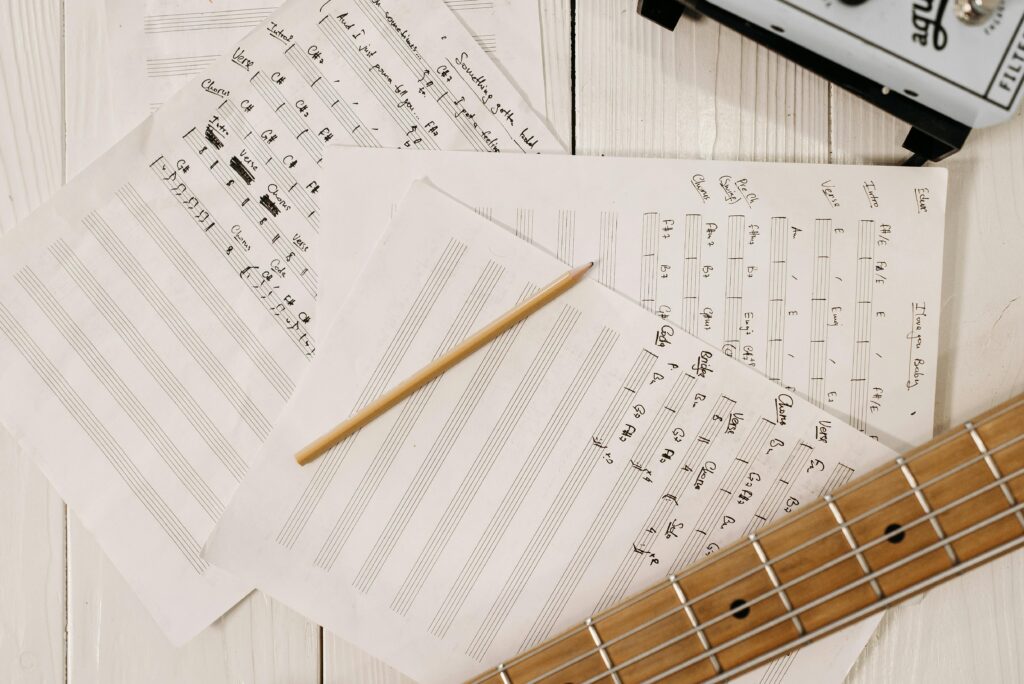

Different instruments boast their own distinct notation systems and techniques when it comes to reading sheet music. Although the fundamental principles of musical notation stay consistent across the board, individual instruments often employ specialized symbols and markings to convey their nuances. Whether it’s the intricate fingerings of a flute, the chord diagrams of a guitar, or the bowing indications for a violin, understanding the specific notation system tailored to your chosen instrument is paramount for effective communication and performance.
For instance, wind and brass instruments typically utilize symbols such as breath marks, slurs, and articulations to guide performers on phrasing, dynamics, and expression. String instruments, on the other hand, rely heavily on bowing indications, fingerings, and position markings to convey the intricacies of pitch, tone, and technique. Percussion instruments often incorporate a wide array of notation techniques, including various types of noteheads, rhythmic patterns, and special symbols to indicate striking techniques and dynamics.
Moreover, mastering the intricacies of an instrument’s notation system enhances one’s ability to interpret sheet music accurately. Additionally, it facilitates effective communication and collaboration with other musicians. Whether you’re a seasoned performer or a novice enthusiast, delving into the specifics of your instrument’s notation system opens up more possibilities. It also allows you to express yourself fluently and authentically within your chosen musical domain.
8. Tips for Effective Sheet Music Reading


Developing proficiency in reading sheet music is akin to honing any other skill—it necessitates consistent practice and repetition. Dedicate ample time to practice regularly? Why, because it reinforce your familiarity with musical notation and also refine your ability to interpret it effectively.
To embark on this journey, it’s advisable to break down the learning process into manageable steps. Begin with straightforward pieces that align with your current skill level, gradually increasing the complexity as you grow more comfortable. This incremental approach allows for a smooth transition, preventing overwhelming challenges and fostering steady progress.
In your quest to master sheet music, employing mnemonic devices can serve as invaluable aids. These memory aids assist in recalling the names of notes positioned on the staff, facilitating quicker recognition and comprehension. Whether it’s acronyms, rhymes, or visual associations, incorporating mnemonic techniques into your practice routine can significantly enhance retention and fluency.
Moreover, delving into the realm of music theory can greatly enrich your understanding of sheet music. By grasping fundamental concepts such as scales, chords, and intervals, you’ll develop a deeper insight into the structure and organization of musical compositions. This theoretical knowledge elucidates the significance of notation symbols. Also, it empowers you to decipher their intended meaning with greater precision.
Supplementing your study with auditory reinforcement is another potent strategy. Listening to recordings of the pieces you’re learning provides invaluable insights into nuances such as phrasing, dynamics, and articulation. By immersing yourself in these interpretations, you’ll glean valuable guidance on how to imbue your performances with expressiveness and authenticity.
9. Practice Strategies


Enhancing your sheet music reading skills entails a multifaceted approach, with various strategies and techniques at your disposal. Among these, sight-reading exercises stand out as an indispensable tool in your arsenal. By tackling unfamiliar pieces of music at sight, you can sharpen your reading abilities. Also, it will cultivate adaptability and confidence in your musical endeavors.
Incorporating sight-reading into your practice routine offers a dynamic challenge. Moreover, it presents you with a diverse array of musical compositions to decipher on the spot. This process encourages quick thinking, as you must swiftly analyze notation symbols, grasp musical patterns, and translate them into coordinated movements on your instrument. Over time, regular sight-reading exercises expand your repertoire of sight-reading skills. They also enable you you to tackle increasingly complex pieces with ease and fluency.
As you engage in sight-reading, it’s essential to adopt a patient and methodical approach. Begin by practicing at a deliberately slow tempo, allowing yourself ample time to process each note and phrase. Gradually increase the speed as you grow more familiar with the piece, maintaining a balance between accuracy and tempo. This gradual tempo progression cultivates precision and control, laying a solid foundation for future performances.
Furthermore, focusing on challenging sections within the music is key to refining your sight-reading proficiency. Identify passages that pose difficulties, whether due to technical complexity, rhythmic intricacies, or unfamiliar key signatures. Isolate these sections and devote focused practice sessions to mastering them individually.
10. Conclusion For How To Read Sheet Music
Learning how to read sheet music is a valuable skill that opens up a world of opportunities for musicians. By understanding the fundamentals of musical notation, including notes, rests, clefs, key signatures, time signatures, and rhythm, you can accurately interpret and perform a wide range of musical compositions. With patience, practice, and dedication, anyone can master the art of reading sheet music. So pick up your instrument, grab some sheet music, and start making beautiful music today!
So, now that you know how to read sheet music, why not check out how VELCOA can help you in your career? Click here for more information.
